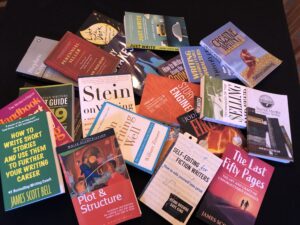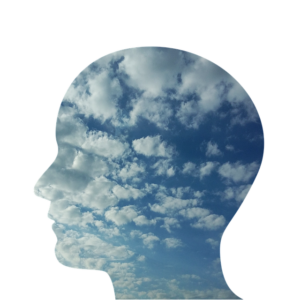 I was eavesdropping on Quora again and stumbled across a thread about how to write a dance scene. Because I included a sensual dance in the WIP, the question piqued my interest. I’ve written dance scenes before, but my characters spent most of their time spying on bad guys. Nothing like the scene I wrote in the WIP (which also ties into the plot).
I was eavesdropping on Quora again and stumbled across a thread about how to write a dance scene. Because I included a sensual dance in the WIP, the question piqued my interest. I’ve written dance scenes before, but my characters spent most of their time spying on bad guys. Nothing like the scene I wrote in the WIP (which also ties into the plot).
The writers who responded on Quora had such great advice, I had to share.
Each answer attributed to the writer, of course.
Original question: How can you describe a dance in writing?
Here’s two examples of how not to do it.
She stepped onto the floor and awed them all with her dancing.
Under-descriptive. Dancing is such a physical and emotional movement that you have to balance those two in your writing and neither happened here (Sue: She means in the above example).
She gazed across the lacquered wooden tiles and, with a sudden burst of courage that she hadn’t known she’d possessed, stepped onto the dance floor. As the thrumming rhythm of classical music whispered into her ears, she began to dance.
Sliding her right foot back and the other one forward, she dropped low so that her dress brushed the ground, then sprang back up again, so quickly that she got whiplash. She threw her arms out and waved them from side to side, perfectly in tune with the beat, before jumping into the air. Her dress spun around her and for a moment it felt like she was flying … then the ground was beneath her again.
That hurt as much to write as it did to read. I shouldn’t be telling the reader each one of the movements that our dancer makes, unless I want an incredibly monotonous one-hundred page instruction manual on how to jump up and down and fling your hands in the air, like what the MC is doing here. Did you catch that? Possibly not; it sounded like it had taken an hour for her to dance when it was really just a split-second.
When you write about someone dancing, make sure that it’s obvious. It’s okay to say the word “dance.” Not everything has to be a ten-page description — but not everything can be a one-word summary, either. Tie in enough of the surroundings to establish a mood and a sense of place. Lastly, make sure that the dance conveys what you want it to — if it’s careless, make it sound careless. If it’s more meaningful, make it sound like that.
Let’s try this again.
She was dancing. Arms flailing in the sky above her, she whirled around and whooped her happiness into the sweat-stained air. Foot forward. Back. She couldn’t remember the last time she’d done this — why had she ever stopped? A hand grabbed hers and she was swung backward, dipped low, then soaring into the air, the flashing colors momentarily blinding her … she touched ground again and skidded to a smiling, breathless halt.
That’s a rough paragraph but it conveys what it needs to. It established a sense of place, action, and a connection with the dancer. Not under-descriptive or over-descriptive, just effective.
Aaaand that’s it. Hope it helped.
Do not describe each and every dance step in detail. It’ll get complex and it’ll sound very mechanical. Describe one step, then follow it up by describing how a character felt while they did it. Do they feel dizzy? Happy? Feel an adrenaline rush? Feel scared?
Describe what they see. Does the room start to spin? Do they see the audience looking at them in awe? Describe the way their body moves. Is it effortless? Are they having trouble remembering the steps? Is any part of their body sore?
Describe the atmosphere. Are they dancing at a party? What kind of music is playing in [t]he background? What kind of beats does it have? Can they fee the bass thumping through their body? Is it a popular song? How many people are there? Are they dancing in a crowd, or alone on a stage? What are they wearing?
Give meaning to the dance. It must be significant if you are introducing it in your text. Why is it significant? Is it about how liberated, happy and care free the character feels when they dance? Is it an intimate dance sequence the character shares with someone they love? Does the dance bring back memories? Is it demonstrating their hard work? Is it something they are doing to lose some steam? Do they have a purpose behind it?
The dance scene is always more than just the movement of the character’s body. It is significant to the plot in some way. You need to subtly highlight that significance. At most, if it isn’t anything serious, it can be used to manipulate the reader’s senses. Make them feel, hear, touch, smell, move, see, etc. Transport them. Make them feel as if they are dancing, or as if they are the audience and they are watching someone dance from up close. Writing the perfect atmosphere perfectly is the key.
And my favorite answer…
James Sams, Writer/Editor wrote:
I’d like to caution you against “over describing”. Books are not movies. We can see every step of the Tango in a movie, but no one wants to read what every step is. If you write things like…
“He moved his left foot backward in a smooth motion, sliding across the slick floor. She slid her right foot forward, chasing his retreating foot with hers, like a fox on the hunt. Dipping forward and looking into her eyes, his fingers tightened on her ribs as his left foot came forward again, surprising her foot and chasing it back. They stopped, toe to toe, and he pulled her hips in close to his.
Threatening to brush his lips against hers, he looked to the left, and then to the right. She mimicked him, turning her head opposite. To the right, then to the left.
He pushed her away as though she were too terrible, yet to[o] wonderful, to be near, yet he held on to her left hand with his right, catching her as their arms pulled taut and spinning her out and away. Then he reeled her back in, unable to give her up.
She fell into him, his strong arms wrapping her tight, protecting her before casting her out again.”
… you can get away with it for a paragraph, maybe two. Even with the nice similes and small details, it will soon become agony for a reader to get through. You have become a puppet master, forcing the reader to imagine each foot, each hand, each head motion exactly the way you want it to be. Readers don’t like that. They like to use their imaginations. They want you to give them a coloring book outline and then hint at what colors they should use when they color it in with their imagination.
To give them those subtle colors, only give sweeping descriptions, and add in the senses. Put in the emotions, even if they are only faux representative ones [that] describe the types of movement.
The best thing you can do with a dance, is keep it short, at least in your description. Focus on the characters’ feelings, fears, hopes and thoughts, and then come back for another quick description. If you took the dance I wrote above and stretched it out for the full dance, describing every move in detail, I guarantee even an editor will begin skipping over it as they read. Even if you don’t give every little dance step, it will be too long and people will just let their eyes slide over it, looking for the place you stop describing and get back to the story.
Don’t be afraid to use a dance, just remember, readers are reading for the characters and their thoughts, feelings, and stories. The descriptions, backgrounds, clothes, etc. need to always take a back seat.
I hope that helped.

What do you think, TKZers? Have you written a dance scene? If so, did you follow these guidelines? Any other tips to share?




 Private pilot Cassie Deakin has her feet firmly planted in the air. But when she lands on the ground and has to help disentangle a murder mystery, the landscape isn’t nearly so friendly.
Private pilot Cassie Deakin has her feet firmly planted in the air. But when she lands on the ground and has to help disentangle a murder mystery, the landscape isn’t nearly so friendly. 

 It’s no secret that I’m slightly obsessed with the brain. Okay, okay, it’s a full-blown obsession, but it’s such a fascinating organ!
It’s no secret that I’m slightly obsessed with the brain. Okay, okay, it’s a full-blown obsession, but it’s such a fascinating organ! Back in 2015, I was chatting with a dear writer friend, Paul Dale Anderson, about the different types of writers and readers.
Back in 2015, I was chatting with a dear writer friend, Paul Dale Anderson, about the different types of writers and readers.

 Last night, my husband and I went to a pumpkin festival with another couple. The town blocks off downtown’s main drag, and skeletons, witches, monsters, live music, and laser shows filled the streets.
Last night, my husband and I went to a pumpkin festival with another couple. The town blocks off downtown’s main drag, and skeletons, witches, monsters, live music, and laser shows filled the streets.

 Anne R. Allen is a popular blogger and the author of the bestselling Camilla Randall Mysteries as well as the Boomer Women Trilogy and the anthology Why Grandma Bought that Car (Kotu Beach Press.) Her most recent mystery is Catfishing in America (Thalia Press) a comic look at romance scams. Her mystery The Gatsby Game is being published in French at the end of this month. Anne’s nonfiction guide, The Author Blog: Easy Blogging for Busy Authors, is an Amazon #1 bestseller that was named one of the 101 Best Blogging Books of All Time by Book Authority. She’s also the co-author, with Catherine Ryan Hyde, of the writer’s guide How to Be a Writer in the E-Age. She blogs with NYT million-copy seller, Ruth Harris, at “Anne R. Allen’s Blog…with Ruth Harris.” You can find them at
Anne R. Allen is a popular blogger and the author of the bestselling Camilla Randall Mysteries as well as the Boomer Women Trilogy and the anthology Why Grandma Bought that Car (Kotu Beach Press.) Her most recent mystery is Catfishing in America (Thalia Press) a comic look at romance scams. Her mystery The Gatsby Game is being published in French at the end of this month. Anne’s nonfiction guide, The Author Blog: Easy Blogging for Busy Authors, is an Amazon #1 bestseller that was named one of the 101 Best Blogging Books of All Time by Book Authority. She’s also the co-author, with Catherine Ryan Hyde, of the writer’s guide How to Be a Writer in the E-Age. She blogs with NYT million-copy seller, Ruth Harris, at “Anne R. Allen’s Blog…with Ruth Harris.” You can find them at